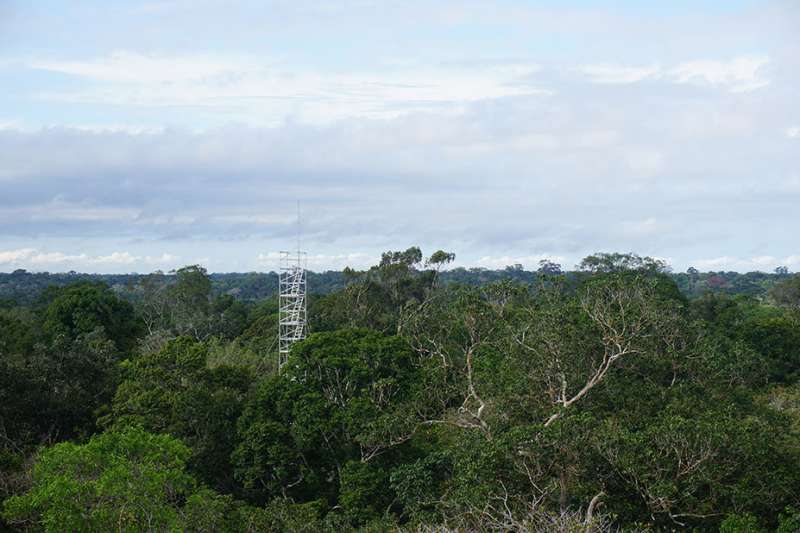Trees in the Next Generation Ecosystem Experiments–Tropics site survive droughts by building water reservoirs and minimizing water loss to the surrounding soil. Credit: Lawrence Berkeley National Laboratory
Why do some tropical trees survive extensive droughts and others do not? Scientists took up this question in a three-month study of various tropical saplings. Their results suggest that species that avoid dehydration have traits that favor water storage, allowing them to retain a water reservoir during the drought. Further, the trees reduce their root surface area, suggesting a role for root abscission in preventing water loss from roots to soil during severe drought.
Tropical trees are part of globally vital, climatically sensitive, and poorly understood ecosystems. This study offers insights into how these trees respond to droughts. It highlights mechanisms and processes that control tree survival, which influences carbon dioxide levels.
To test the ability of different species of tropical tree saplings to avoid dehydration during severe droughts, scientists subjected potted saplings to three months without water. The response of the saplings was compared to that of well-watered trees. After the simulated drought, some species had a 100 percent survival rate. These trees had a water status similar to well-watered plants.
How? These species avoided dehydration because of traits that favor water storage, such as low tissue density. These traits provided a water reservoir that buffered the drought conditions. Surprisingly, these dehydration-avoiding trees maintained most of their stored water during the drought. Further, these species had a reduced root area, which diminished further during the drought. The team believes this root growth may slow water loss into the surrounding soil. The results suggest that saplings' ability to avoid dehydration during extreme drought depends on retaining stored water.
More information: Brett T. Wolfe et al. Retention of stored water enables tropical tree saplings to survive extreme drought conditions, Tree Physiology (2017). DOI: 10.1093/treephys/tpx001
Provided by US Department of Energy
























